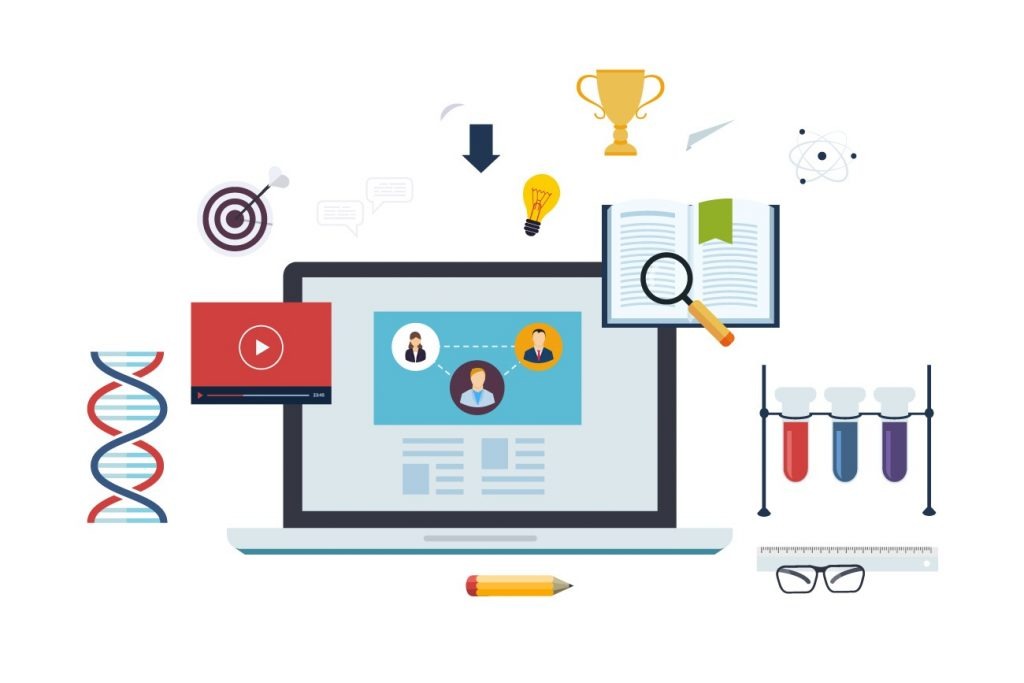Today, facilitating employees’ continuous learning is a key goal in Learning & Development departments.
To meet that goal, implementing an ecosystem that integrates microlearning ranks high among the priorities. And the trend look set to last. Here we explain why.

Learning in the everyday workflow is becoming unavoidable
Our now “VUCA” environment (volatile, uncertain, complex and ambiguous) is posing many agility challenges for businesses.
To support the “learning” component of today’s HR transformations, microlearning is proving to be an interesting lever:
- It is designed to fit into an employee’s everyday work and helps to develop a continuous learning culture, thereby countering rapid knowledge and know-how obsolescence (due partly to the technological acceleration).
- It generates immediate employee satisfaction by providing resources that are easily accessible everywhere, all the time, and on any device (particularly mobiles).
- Each learner can focus primarily on their behavioural skills, their agility and their adaptability: microlearning consists of online content, processes and methods accessible in just a click.
- As the modules last 3 to 5 minutes, employees save the valuable time they lack more and more. And they do so to be curious, to keep up with the outside world, to train, or even innovate… It therefore gives their work meaning and value.
Helping to reinvent the company’s Learning & Development ecosystem
Microlearning contributes to a new learning process focused on operational support. Articles, tutorials, blogs, live video feeds and infographics are all “bursts” of information available to everyone, everywhere, all the time and on any device.
The learning organisation should create a virtuous knowledge management circle that integrates capitalisation and sharing. What better format for employees than one they can create content for or use to share expertise. Optimise the conditions for success and think about providing a self-service video booth*!
Like other “new” learning formats, microlearning is also an opportunity
for L&D departments to rethink training engineering and to innovate thanks to new customer-centred methods, such as design thinking. It is an invitation to listen before doing in order to optimise the learner experience.
Who are they? What is their typical working day? Why do they need to be more efficient at work?
Finally, this new era demands a whole host of new tools**. The L&D IS landscape no longer relies exclusively on the now invisible and polymorphous LMS platform. User experience, which also requires customised content, now plays a key role: access to digital resources must be simple, mobile, available on and off-line, recommended by peers and driven by data.
But what exactly is the difference between micro and macrolearning?
My intention is obviously not to compare micro and macrolearning but to connect them, to understand their respective benefits in order to create an appropriate L&D organisation.
The two can be distinguished by stepping into the learner’s shoes.
- Microlearning must meet a one-off, immediate need: “I need help now!”
- Macrolearning, which can take the form of several traditional or digital learning approaches, is suited to a skills development or transformation project: “I would like to (or I must) learn something new”.
Ideally, in either case, the employee should set their own learning objectives as it will boost their engagement.
Consequently, attempting to convert everything to microlearning is not a good idea. Microlearning works wells when it aims to give staff relevant information swiftly. It addresses specific and partial learning goals and should therefore be seen -and designed- as “on-the-job” help, either to support the first concrete steps (the most costly ones), or as a memory jogger for using tools, methods and processes, or even to provide an expert eye.
A popular format with employees
According to the Cegos 2018 Barometer “Transformation, skills and learning: how to address the future?”, employees are quite open to this kind of method. When asked the question: “What do you think are the most effective ways to develop skills?” 44% called for access to online resources (documents, articles, video and other modules).
As mentioned above, employees apparently like the format because it fits easily into a busy schedule. The learning approach can be tailored to address specific needs. And neuroscience has proven that repeated use fosters memory anchoring.
A learning exercise for the trainer
Creating an impact in just three minutes is not always an easy task.
A microlearning module is just one and only one key message (and preferably the right one!). Deciding not to say everything is a good objective and a good exercise for trainers, the focus being on “need to know” rather than “nice to know”.
Content should also be enhanced with a simple, impactful presentation: structure, visuals and media must be particularly well designed.
Promises of enhanced microlearning in view
Data analysis and the growing strength of artificial intelligence will enable businesses to further customise their learning offers and practices.
For example, learning by conversing with a “chatbot” will gain ground and will be improved. Soon, we will be able to rely on these technological advancements to work on other skills in addition to foreign languages.
I look forward to reading about your “microlearning” experiences and innovations in your comments!
* Example with Rapidmooc
** Examples of specialised microlearning platforms: Axonify; Grovo; QStream


Leave a comment
Frank Murphy Since 5 years
This has advantages in a busy service desk environment. I particularly like the challenge of writing materials for the 3 minute impact challenge.